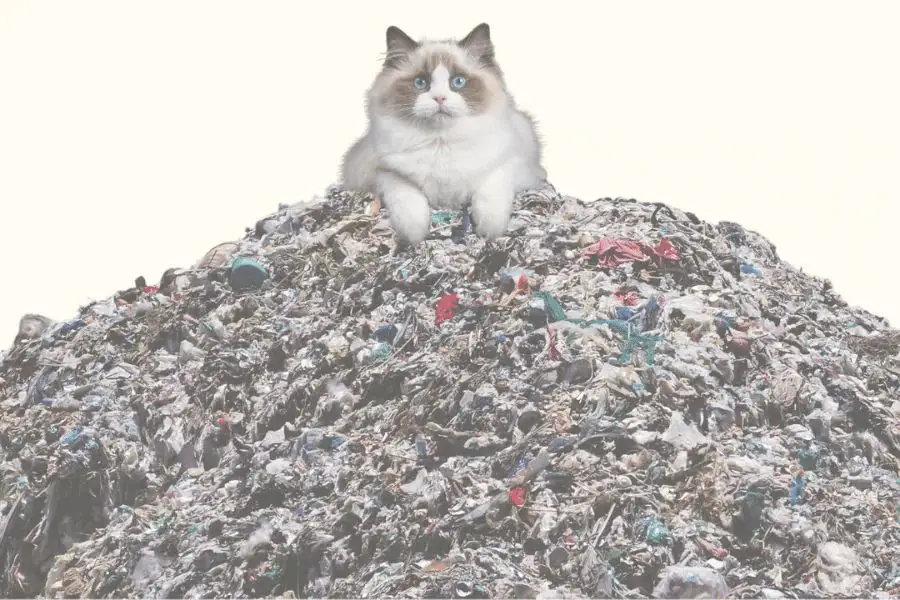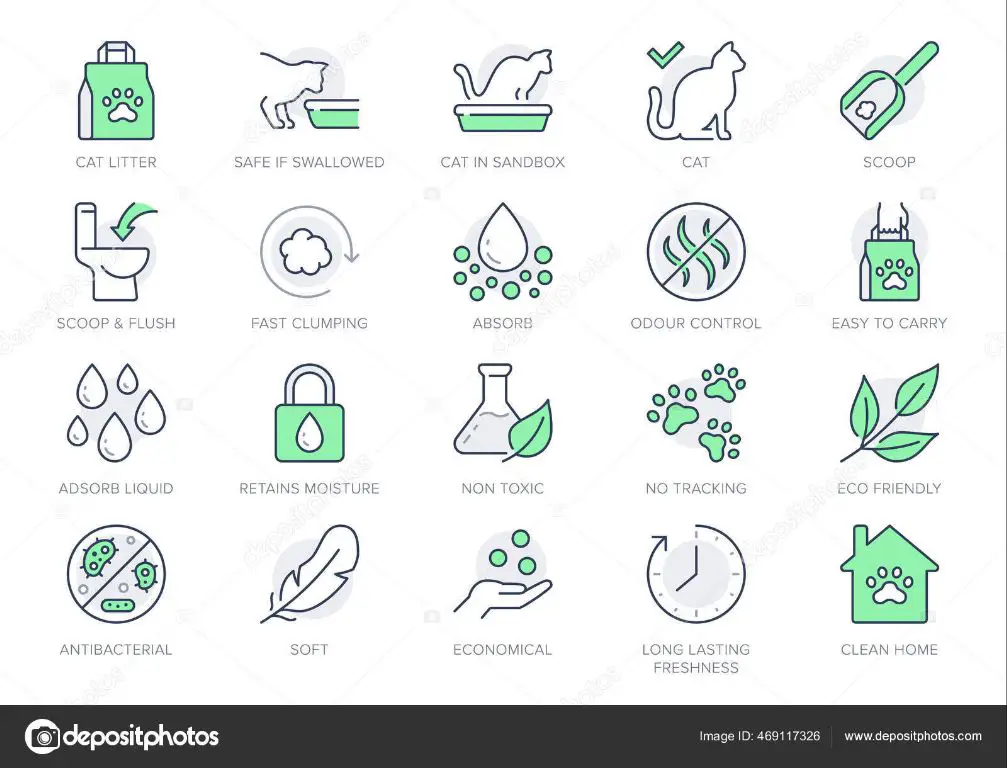Recycling cat litter boxes is an important consideration for many cat owners who want to reduce their environmental impact. With millions of households owning cats, the waste from litter boxes can really add up. Each year, billions of kilograms of clay cat litter end up in landfills from discarded litter boxes. The mining process to obtain clay and other materials for cat litter also takes a major toll on the environment. Knowing whether cat litter boxes are recyclable or not can help cat owners make more sustainable choices.
This article will examine the most common cat litter box materials – clay, silica gel, pine pellets, and newspaper pellets – and discuss the recyclability of each type. Tips will be provided for reducing waste from litter boxes through recycling and other methods. The article will also touch on some of the latest innovations in developing more eco-friendly cat litter solutions. The goal is to inform cat owners about this important but often overlooked issue, so they can minimize the environmental impact of their feline friends.
Materials Cat Litter Boxes Are Made From
Cat litter boxes come in a variety of materials. Here are some of the most common:
Clay/Clumping Litter
The most common type of cat litter is clumping clay litter made from bentonite clay. Bentonite clay absorbs moisture and forms clumps when wet, making it easy to scoop out urine and feces from the litter box. Clay litter is inexpensive and effective at controlling odors, but is not biodegradable or recyclable (source).

Silica Gel Crystals
Silica gel crystals are made from sand. They are highly absorbent like clay litter, but do not clump. Silica gel litters are lightweight and low tracking. However, they are not biodegradable or recyclable.
Pine Pellets
Pine pellet litters are made from compressed pine sawdust or wood shavings. They are biodegradable and environmentally-friendly. The pellets turn to sawdust when wet. Pine pellet litter does not clump but can be composted or used as mulch when soiled.
Newspaper Pellets
Some cat litter is made from compressed pellets of recycled newspaper. These are biodegradable and recyclable options. However, they may not control odors as effectively as clay or silica gel litters.
Are Clay Cat Litter Boxes Recyclable?
Clay cat litter boxes, which are made from bentonite clay, are generally not recyclable through curbside recycling programs. This is because the clay litter absorbs liquids and odors, which can contaminate other recyclables in the recycling stream (RecycleNation, 2014).

While clay litter boxes themselves cannot typically be recycled, the clay material may be put to use as daily cover at landfills. The absorbent nature of clay can help contain odors and moisture when used as landfill cover (ModKat, n.d.). However, this reuse depends on policies at local landfills.
So in most cases, clay cat litter boxes will end up in a landfill. To reduce waste, look for cat litters made from compostable materials like wood, paper, or wheat instead of clay.
Are Silica Gel Litter Boxes Recyclable?
Silica gel litter boxes, which are made from silica sand, are typically not recyclable curbside. The material and manufacturing process makes them difficult to break down and process through normal recycling programs.
According to https://www.quora.com/Is-a-cat-litter-box-recyclable-or-trash, “Crystal litter is made from silica gel crystals. It is highly absorbent and provides excellent odor control. Crystal litter boxes themselves are not recyclable curbside.”
While regular curbside recycling won’t take silica gel litter boxes, some specialized recycling programs and facilities may be able to process them. Cat owners would need to check with local recycling centers to see if they can handle silica gel litter boxes. Otherwise, the litter box would have to go in the regular trash.
The silica gel crystals may be recyclable through specialized programs as well, but the litter box itself is typically destined for a landfill unless the owner has access to a facility that can recycle that material.
Are Pine Pellet Litter Boxes Recyclable?
Technically, pine pellet litter boxes are recyclable since they are made from wood/paper materials. However, used pine pellet litter is often contaminated with cat urine, feces, and chemicals from the litter that make it impractical to actually recycle.
Most recycling facilities do not accept used cat litter for recycling due to contamination issues. The moisture and bacteria from cat waste can damage recycling equipment and contaminate other recyclable materials. Some facilities may reject entire loads if they contain hazardous cat waste.
The best disposal method for used pine pellet litter is composting. The pellets are biodegradable and the composting process helps break down the waste and kill bacteria and parasites. Composting used litter with high carbon materials like leaves or sawdust can neutralize odors and minimize contamination risks. Check local regulations as some areas restrict composting cat waste.
Another option is to use spent pine pellet litter as fuel for biomass heating systems or wood stoves in accordance with local ordinances. The carbon neutral pellets provide a renewable fuel source. Ensure the litter is completely dried out first to minimize odors and moisture content when burning.
While not technically recyclable, responsibly composting or reusing pine pellet litter aligns with sustainable principles by reducing landfill waste and avoiding contamination of recycling streams.
Are Newspaper Pellet Boxes Recyclable?
![]()
Yes, newspaper pellet cat litter boxes can generally be recycled with other paper products as long as any non-paper liners are removed first. Newspaper pellet litter boxes are made of paper pulp or cardboard, which are recyclable materials. However, some boxes may have a plastic liner or bag inside to hold the pellets. These plastic components need to be completely removed before placing the box in your curbside recycling bin or taking it to a local recycling center.
Once any non-paper portions are discarded, the remaining cardboard box can be broken down flat and added with newspapers, office paper, magazines, and other paper items. When preparing the box for recycling, make sure to shake out any remaining pellets or litter residue as well. Recycling facilities recommend keeping paper recycling streams contaminate-free.
So in summary – newspaper cat litter boxes themselves can be recycled, but separate out any non-paper liners or inserts first. Then the cardboard box can be flattened and recycled with your other paper recycling (Source). This is a great way to reduce waste and give the cardboard box another use.
Recycling Tips for Cat Owners
There are several ways cat owners can reduce waste and recycle when it comes to cat litter boxes:
Look for cat litter brands that are made from recyclable or biodegradable materials like paper, pine, wheat, or corn. Popular options include Feline Pine, Swheat Scoop, and Yesterday’s News.
Try to reuse or repurpose old litter boxes if they are still in good condition. For example, plastic litter boxes can be cleaned and donated to animal shelters. Or get creative and use them as planters or storage containers around the house.
Compost biodegradable litters made from materials like pine, wheat, and corn. Check the litter packaging to see if they specify being compostable. Avoid composting clumping clay litters.
Use biodegradable bags or old newspaper to dispose of traditional clay litters so you can minimize plastic waste.
Reducing Waste from Litter Boxes
There are a few ways cat owners can reduce the amount of waste that comes from litter boxes:
Use liners sparingly – While plastic liners make removing waste easier, they create a lot of plastic waste. Consider using liners only when removing all litter for a full change, or use biodegradable liners made from plant materials. Scooping daily into a liner-free box reduces plastic waste.
Scoop waste daily – Scooping out urine and feces daily, even if you use liners, keeps odor down and reduces the amount of waste building up. Frequent scooping means less waste to throw out at litter changes.
Buy litter in bulk – Purchasing 20-40 pound bags of litter reduces the number of plastic bags used over time. Some cat litter brands sell reusable tubs that you can refill with bulk litter. Look for brands that ship in recyclable cardboard boxes over plastic sacks or tubs.
Innovations in Sustainable Cat Litter
As environmental awareness grows, cat owners and litter manufacturers are seeking more sustainable options. This has led to exciting innovations in biodegradable cat litters made from natural materials like wood, paper, and plant fibers. Manufacturers are also finding greener production methods.

One innovative product is Tidy Cats’ Pure Nature line, made from natural pine and plant-based binding materials. The pine comes from renewable forests, and the litter breaks down naturally. Other companies use recycled paper or wheat straw to make biodegradable litter.
Production methods are becoming more sustainable too. World’s Best Cat Litter uses renewable bamboo and reduces water usage in manufacturing. Some companies like Ökocat use sustainable manufacturing practices and solar energy. Exquisicat makes litter from reclaimed wood scraps that would otherwise go to landfills.
While traditional clay litters are not biodegradable, some companies like Purina are finding ways to make the mining and production process more sustainable. They are also making lightweight litters that use less clay. These innovations give cat owners greener options to reduce the environmental impact of cat litter.
Conclusion
Cat litter waste represents a significant portion of landfill trash, so finding recyclable and eco-friendly options is important. While traditional clay litter is not recyclable, some newer alternatives like silica gel, pine pellets, and newspaper pellets may be compostable or recyclable depending on your local facilities. With creative thinking and commitment to sustainability, there are many ways cat owners can reduce litter box waste such as using biodegradable bags, reusable boxes, and litter alternatives like pine pellets. While no cat litter option is perfect, being an informed and eco-conscious consumer can lead to better choices that reduce your cat’s environmental pawprint.
The key points are that traditional clay litter ends up in landfills but some newer litters may be recyclable or biodegradable. Check with your local waste management about options in your area. There are also creative ways to reuse litter boxes and reduce overall waste. Making informed choices about sustainable cat litter is an important way to be a responsible pet owner.

